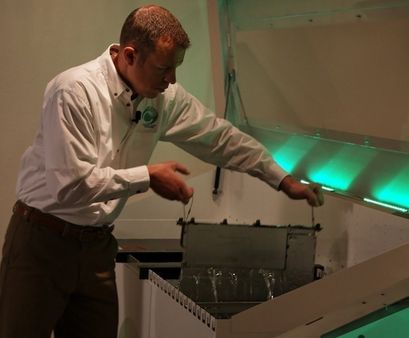Intel tests submerging servers into oil to cut power and cooling costs.

While mineral oil-cooled systems have been aroundfor quite some time now, it seems like a modern iteration of the idea has caught Intel’s eye. After a year of use, the company stated that it was pleased with the results of its latest server cooling endeavor. Utilizing Green Revolution’s CarnotJet mineral oil cooling system, Intel was able to cut both cooling and power costs.
According to Intel, the tested servers only needed another 2 to 3 percent of server power for cooling, down from the typical 50 or 60 percent overhead of standard servers. In comparison, the world’s most efficient data centers from Google or Facebook still run with about 10 or 20 percent overhead.

The major advantage of mineral oil cooling is that it is relatively cheap and can be adapted to work with a variety of systems ranging from small computers to massive servers. Since it is non-conductive, the oil doesn’t short out circuits and is harmless to computer hardware. On the other hand, it can be very difficult or almost impossible to clean and remove mineral oil from the hardware once it has been submerged.
The cooling alternative is definitely appealing to massive server arrays, saving precious energy and cooling costs. The only downside is that the oil needs to be flushed and changed every ten years or so. |





